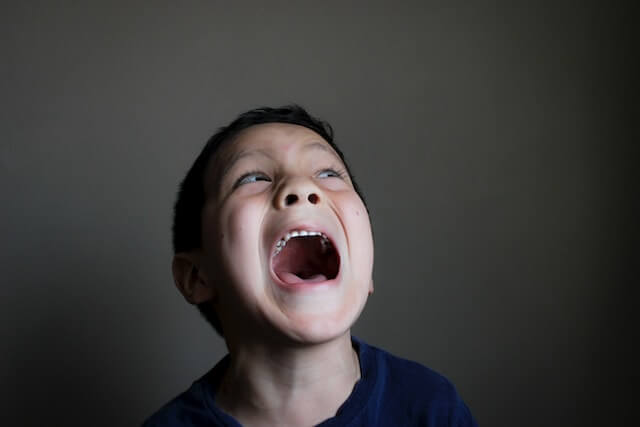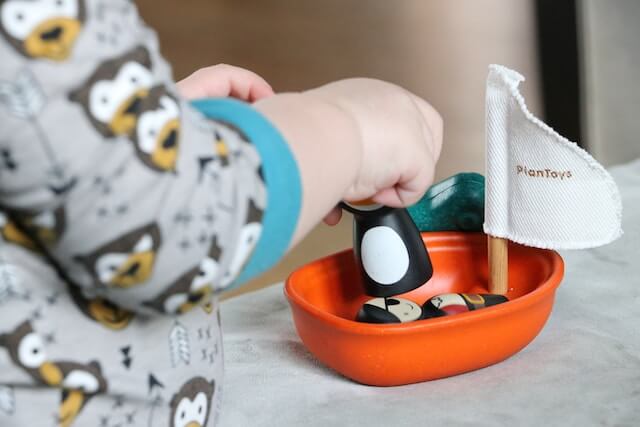Children with autism may struggle to communicate, leading to many innovations over the years to allow understanding. In this article, we will talk about one of those systems – the Picture Exchange Communication System, or PECS and how it’s changed the world.
WHAT IS PECS®?
PECS was developed in the United States of America in 1985 by Andy Bindy, Ph.D., and Lori Frost, MS, CCC-SLP. It came to life as a form of augmentative communication for children with autism, an alternative to previous attempts to simplify the process.
Forty years later, PECS has been implemented around the world. Thousands of people of all ages are using it successfully, even with variations in physical, cognitive, and communication challenges. It’s been a successful addition to communication assistance.
Users adapting PECS will go through six phases. Let’s talk more about each level of the Picture Exchange Communication System.
THE SIX PHASES OF PECS
PECS comes in six unique phases. Each works to allow children with autism to communicate, think, and even move on their own.
Phase I
The first phase, known as How To Communicate, is the start of the PECS process. It’s the foundation for the PECS system and will help a child with autism become accustomed to using it.
In this phase, the learner learns to exchange pictures for activities and images they desire. It gets them used to the system and what they will gain if using it to their advantage.
Once they have the basics down, it’s time to move on to the next portion. Here, the specifics shift for the communicator.
Phase II
The second phase, Distance and Persistence, allows learners to use single pictures in new places. They operate the system with new people and even try it over long distances. It’s a slight advancement of the first learning experience.
Learners learn to communicate persistently in this phase. If they want something, they can make it clear with the Picture Exchange Communication System.
Phase III
The third phase, Picture Discrimination, makes things a little more complex. Here, the learner is tasked with discriminating pictures from each other.
For example, the user may be given two images and asked which is their favorite. They are learning to communicate their favorites and prioritize one item over the other.
The favorite items then go in a PECS Communication Book. This gathering of images is a ringer binder made with hook fastener strips to keep pictures secure and removed when necessary.
Next, learners will form the basics of sentence structures for complete communication.
Phase IV
The fourth phase, Sentence Structure, helps children with autism focus on putting together more complete forms of communication. In this stage, learners will understand how to make simple sentences.
Learners will form these sentences by placing images on a detachable Sentence Strip. They start with an “I Want” paper and then follow it with a picture of what they desire.
This phase helps make the want of the speaker firmer. It provides clarity in communication and improves communicative ability.
Once mastered, it’s time to move up on the requests. Questions come into play next.
Phase V
The fifth phase, known as Responsive Requesting, allows children with autism to answer specific questions from the listener, such as “What do you want?”. The individual will pick up images to answer the speaker with ease.
This phase may take a little bit of practice. However, the previous sections do an excellent job of setting up a child with autism for success in this area.
Next, it’s time to dive into the final piece of the puzzle. The user may upgrade to communicate even better to the listener.
Phase VI
The sixth and final phase, Commenting, permits the Picture Exchange Communication System user to respond and comment on more generalized questions.
The individual using the PECS system may respond to questions like “What is it?” or “What do you hear?”. They learn how to make up sentences, which might start with “I hear” or “It is a”. This phase opens up many doors for children with autism.
Although the PECS may take a while to complete, it’s worth it. There are extensive advantages to this communication method for the listener and users.
Advantages of Picture Communication
Picture communication is an advantageous system for users. Many benefits have appeared over the years in response to its implementation.
PECS allows the listener to understand the individual using PECS because pictures are simple and universal. Many PEC systems also label their images, making communication even simple. All the speaker must do is match their thought to the image, simplifying talk.
Many individuals who start using PECS may avoid establishing a poor history of emotion regarding speech. They can point to what they want, so success is much more likely than without PECS.
PECS is also cheap compared to other assistance programs for children with autism. It’s low-tech but opens up an entire world for those who struggle to communicate.
Of course, this system is still new to most people. Who implements the Picture Exchange Communication system consistently?
Who Practices The Picture Exchange Communication System?
Not everyone has had the chance to access the wonder of PECS. However, many types of people are often familiar with the process.
Practitioners of the PECS include:
- Speech pathologists
- Occupational therapists
- Psychologists
- Physiotherapists
- Parents and teachers with proper training
These individuals are the most common users of the innovative system.
If you want to make an appointment for your child who uses PECS, it’s a good idea to ask ahead of time if they know the system. It will make everything easier for your child. PECS is becoming more and more common.
Conclusion
PECS is an exciting communication addition for those with cognitive, physical, or communicative troubles. It’s easier for children with autism to get their thoughts and desires across to the listener.
Although the world doesn’t use PECS, it’s becoming more common. In the future, we’ll likely see more and more PECS implementations.
If you are ready to work with the best ABA therapy provider in New York, New Jersey or Indiana, give us a call at (732) 402-0297. Our dedicated team is ready to help and we will treat you like family.










